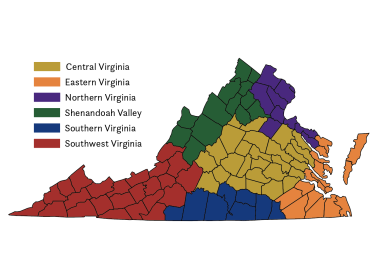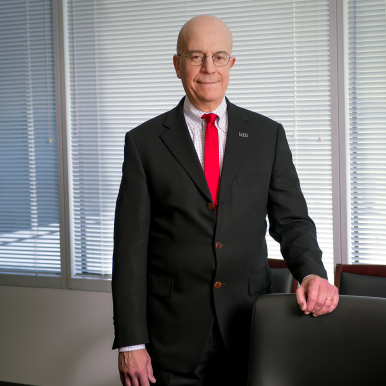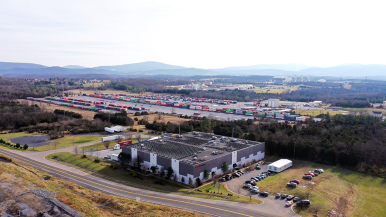Rocket Lab USA is boosting the visibility of one of the United States’ lesser-known spaceports on Virginia’s Eastern Shore.
Since January, the California-based aerospace company has launched three successful missions from its Launch Complex 2 at Virginia’s Mid-Atlantic Regional Spaceport. Rocket Lab selected the spaceport, located within NASA‘s Wallops Flight Facility in Accomack County, as the site of its first U.S. launch site in 2018.
Leaders of the U.S. Space Force have taken note of Rocket Lab’s relationship with the spaceport, according to Ted Mercer, CEO and executive director of the Virginia Commercial Space Flight Authority, also known as Virginia Space, the state agency that owns and operates the spaceport.
“When you listen to speeches or presentations that they give about the space ports, they are now including the Mid-Atlantic Regional Spaceport in their discussions [about] guaranteeing assured access to space for the nation,” Mercer says. “So that’s huge.”
It’s a win-win arrangement, according to Mercer. By using Virginia’s spaceport, Rocket Lab avoids the headache of operating out of NASA’s busier Kennedy Space Center in Florida. “If you want to launch a rocket out of Cape Canaveral, you’re going to have to kind of wait in line,” Mercer says. “We don’t have that issue.”
On Jan. 24, Rocket Lab launched its Electron rocket from Wallops Island — marking the first Electron mission to take off from U.S. soil. Previously, the Electron launched from Rocket Lab’s Launch Complex 1 in New Zealand, from which it launched a mission for the Space Force. For its January mission, Rocket Lab deployed satellites for Herndon-based HawkEye 360, a commercial provider of satellite-based radio frequency data and analytics.
Less than two months later, on March 16, Rocket Lab launched its second Electron mission from Wallops Island. That time, the rocket sent two satellites into orbit for Capella Space, a California-based space tech company.
Rocket Lab made headlines from Wallops again on June 17 when the company successfully launched its first suborbital testbed launch vehicle, dubbed HASTE (Hypersonic Accelerator Suborbital Test Electron), from the Virginia pad. The customer for that launch was Reston-based Leidos Holdings, which was completing a large-scale test for its Multi-Service Advanced Capability Hypersonic Test Bed (MACH-TB) program. The MACH-TB is designed to increase the speed of testing for all commercially available hypersonic systems. According to Morgan Bailey, senior director of communications at Rocket Lab, Leidos is “looking to build on that cadence in the months and years to come.”
Rocket Lab is poised to make more news from Wallops Island. In February 2022, Gov. Glenn Youngkin announced the company had selected the area as the launch site and rocket production complex for its new Neutron rocket, a 130-foot, partially reusable launch vehicle. By comparison, the Electron is 59 feet tall. Another difference: the Electron is always an unmanned rocket.
“Electron does not fly humans, and neither will Neutron at first, but we are developing Neutron to be capable of … [manned missions] in the future,” Bailey says.
While the Electron allows Rocket Lab to deploy satellites “in the single digits” to orbit, the Neutron will be designed to serve “an explosion” of commercial customers who want to put numerous satellites into space at once, according to Bailey.
“We’re entering that era of mega-constellations, where you’re talking hundreds and thousands of satellites that need to be launched to specific orbits and quite quickly and quite cost effectively,”
she says.
Currently, she says, there aren’t enough launch vehicles available to quickly serve these customers, particularly since Russia invaded Ukraine. Since then, Russia has largely halted its launches of commercial satellites. According to a 2022 Reuters report, Russia has accounted for about 16% of the global launch market since 2017.
“We’re really bringing to market a reliable, cost-effective vehicle that’s going to open up the access to space,” Bailey says.
In April 2022, Rocket Lab broke ground on the rocket production complex where the company will manufacture the Neutron on 28 acres adjacent to the Wallops Island Flight Facility. However, “you won’t see much visible progress on that for a few more months because that’s sort of later in the development,” says Bailey, who declined to say how much the complex will cost to build.
Construction is further along on the Neutron’s launch pad, which will be located at the southern end of Wallops Island. Rocket Lab plans to launch the Neutron from there in 2024. The company doesn’t need the production complex to be completed before the launch pad because testing for the rocket will occur at other Rocket Lab sites, Bailey says. The Neutron’s upper stage is being developed with help from the Space Force, which awarded the company a $24.35 million contract in 2021.
Once Rocket Lab is in full production and launch mode on the Neutron, the company plans to hire up to 250 engineers, technicians and support staff to support the Neutron at Wallops Island. The company currently has about 20 to 30 employees there, according to Bailey. “The key function for that team at the moment is still Electron launch operations,” she says.
Local officials are making plans to accommodate the influx of new workers.
In May 2022, the Accomack County Board of Supervisors approved a rezoning and a conditional use permit for Maryland-based CCG Note to build a 140-unit townhome and commercial mixed-use development on property surrounded by the Captain’s Cove community in Greenbackville. That project, referred to as Hastings/Mariner, is stalled by a civil lawsuit filed in November 2022 by Captain’s Cove residents against CCG Note — which bought out the neighborhood’s original developer — as well as its property owners’ association. The plaintiffs contend that CCG Note’s plans to use a private street to access the proposed development and its sewer system in support of the new development violate the neighborhood’s covenants.
Accomack County Administrator Mike Mason says that if that project does not go forward, the county will continue efforts to attract more housing by removing “barriers to development” and by partnering with towns that “have a desire to extend or enhance town services.”
“We will be responsive to developers and builders interested in expanding housing stock by providing them with clear guidance and a ‘path to yes’ through county permitting,” Mason says.
Officials are also spending federal and state funds to prepare for the influx of workers. That includes $600,000 from the American Rescue Plan Act that the county spent at the beginning of the year to add 126 child care openings at new and existing facilities and a $15.6 million Virginia Department of Housing and Community Development grant awarded to Accomack and Northampton Counties to extend broadband service to currently unserved areas.
“The majority of funds in Accomack that came from that grant are being directed in the northeast portion of the county, particularly some communities out there that did not have access at all, and some of these communities are some of the ones that are closest to Wallops Island,” Mason says.
Earlier estimates that the Neutron facility will generate about $2 million in direct annual property tax revenue to the county have not changed, according to Mason. “We haven’t really started to see that,” he adds, “because the construction hasn’t yet commenced.”





